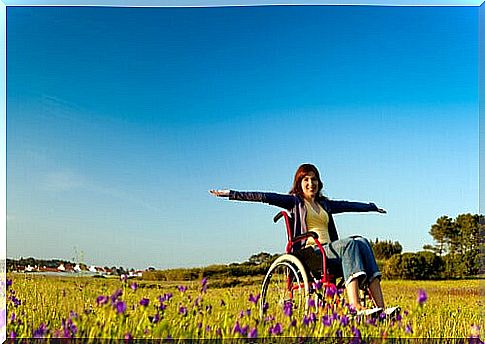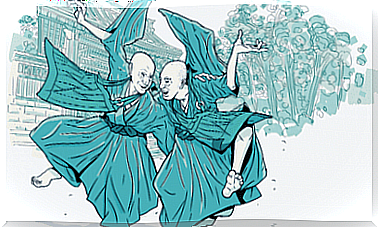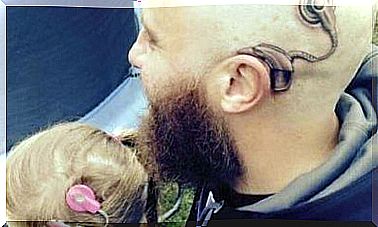Functional Diversity: A New Perspective On Disability

Disability is a condition affecting a number of people. The existence of the latter can result from multiple causes, whether they are related to genetics or the history of the life of the person. We have encountered many models throughout history trying to explain it. In this article, we will deal with the functional diversity model.
Before talking about what the concept of functional diversity means and its usefulness, it is necessary to understand the history of the concept. This will give us an idea of how the concept that society has of people with disabilities has evolved. We find different models on this journey: from demonology to the modern perspective of functional diversity .
The historical principles of disability
The concept of disability has evolved alongside us throughout history. The cultural, medical, technological and social factors of each era have influenced the definition and the expectations that society has generated around it.

In the Middle Ages, disability was seen as a punishment from the gods. This is a demonological model in which anyone who exhibited an alteration of normalcy was considered to be possessed by evil or by a demon. In this society, people with disabilities were detained or isolated at the best of times, even going so far as to kill them in order to keep them away from the rest of the population and so that the evil did not spread.
In the case of the organicist model, although its origins go back to Hippocrates and Galeano, its rise did not materialize until the 20th century. It is a model based on physical and organic pathology. If a person suffers from a disability, it is considered that this is due to a failure of his organism. From this model, people with disabilities are seen as something to be cared for and protected. They lose their autonomy and independence, institutionalization being their only possibility to receive attention.
Modern models inherent in functional diversity
In the post-war period, in view of the multiple consequences of the latter, society had to deal with an increase in the rate of disability, having in a way to assume the challenge of reintegrating these people into society; this is where the socio-environmental model was born. This model views people with disabilities as social individuals destined to return to normal life. At that time, treatment was the creation of technical aids intended for these people to be able to interact with their environment in the best possible conditions.
Today we maintain a model of disability rehabilitation. Model in which we consider the individual as active, autonomous and independent, involved in a process of rehabilitation and motivated in social participation as a full citizen. This model attaches great importance to the role of professionals who surround the disabled person, but it does not focus much on the environmental factors that generate this disability situation.
This explains why the perspective of the integrative model appeared as a response. This model no longer focuses on how we can change the person to fit into normalcy. This model perceives disability as a functional diversity, and a possible lack of adaptation would simply be the logical consequence of a rejection inherent in the context in which the person must develop. This model seeks to break with the favoritisms of normality by insisting on the difference and not on the lack.
What is functional diversity?
The concept of functional diversity breaks with the idea that people with disabilities suffer from a disorder that handicaps them. The company would be the one that catalogs these people as people with disabilities.
The danger would no longer lie only in the categorization and its connotations, but above all in the fact that it would be precisely society itself which would impose these conditions to which the disabled person could not adapt. This is a constructivist idea, easy to understand through the following statement: if everyone was blind, being blind would not be a problem: society would adapt the context to blindness.
It is society that excludes individuals with functional diversity and distances them from “normalcy” by not creating products, resources or tools that are accessible to them. This exclusion presents a certain pragmatism insofar as it is more convenient to take into account the majority than to think of the universality of the population. But in doing this, we are attributing disabling disorders to people who have no reason to experience them.

Universal design
This is where the idea of universal design appears, a term coined by architect Ronald L. Mace. The objective is to try to explain that the creation of products should not be done with a “normal” majority in mind and then adapt it to others. When designing our world, we should take into account the totality of existing individuals.
Universal design is made up of seven basic principles:
- Fair use: it must be able to be used by people with different skills or abilities.
- Flexibility: The design should accommodate a wide range of people with different tastes and abilities.
- Easy to use: the mode of use should be easy to understand and learn.
- Perceptible information: the design effectively communicates the information necessary for its use
- Error tolerance: the design minimizes possible incidents resulting from chance and unforeseen adverse consequences.
- Minimum physical effort: it must be able to be used efficiently and comfortably while generating a minimum of fatigue.
- Appropriate Size: It should be an appropriate size for its approach, use and reach.
At present, we are a long way from the fact that the majority of the population understands what functional diversity means. But walking towards this universally designed utopia can help us eliminate disability from the world. Something that would dramatically improve the quality of life for many people currently excluded from independent and independent living.









